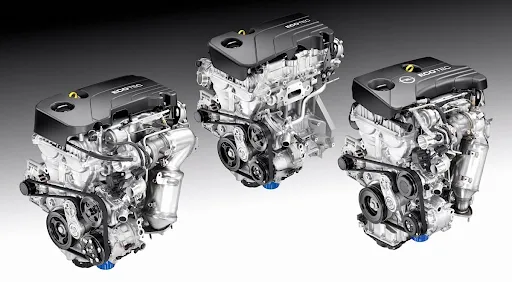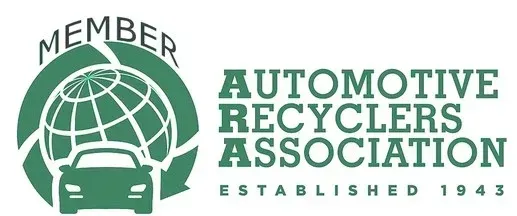Mon - Fri: 8am - 5pm, Sat - Sun: Closed

6-36 Month Warranties
We Ship Local.
Hablamos Español.
Connect with
Understanding GM RPO Codes and SPID Stickers
GM RPO Codes
Why GM RPO Codes Are Important
General Motors created gm rpo codes (Regular Production Option codes) as a system to list every part, configuration, and option a vehicle was built with. These codes ensure that when you need a replacement, whether for a worn engine or a faulty transmission, you get the exact match. Unlike VIN decoding, which gives a general overview, RPOs provide precise detail on specifications such as horsepower, torque, and even transmission ratios.
For anyone shopping houston used engines or reman transmissions houston, decoding these RPO codes is essential. Without them, you risk ordering a part that doesn’t fit your harness, sensors, or drivetrain setup. Knowing your GM RPO numbers saves time, reduces installation headaches, and guarantees long-term reliability.



The spid sticker location is the key to unlocking your RPO codes. Typically found inside the glovebox, under the spare-tire cover, or within the trunk, this Service Parts Identification sticker lists all the codes tied to your exact vehicle. Reading it correctly is the fastest way to identify chevy engine by rpo without relying solely on the VIN. With this information in hand, you’ll know precisely what parts to request, reducing the chance of ordering errors.
Where to Find and Read the SPID Sticker

Your vehicle’s spid sticker location is critical for service and replacement accuracy. Unlike VIN decoding, which provides a broad overview, the SPID sticker gives the fine details. For instance, two Chevy Silverados may share the same VIN series but have completely different transmissions—such as a 4l60e rpo m30 or a 6l80 rpo myc. Without the sticker, you could easily mistake one setup for another.
Inside the glovebox is the most common place for the sticker, but certain models may hide it under the trunk carpet or in the spare-tire well. Once located, match your listed codes against a gm engine rpo list or gm transmission rpo codes chart. This cross-check helps verify not only the engine model but also related components like sensors, flexplates, and spline counts that ensure full compatibility.
When you identify chevy engine by rpo, you cut down on guesswork. Codes like LM7, LC9, or L59 tell you whether you’re working with a Gen III or Gen IV small block, while transmission codes like 6l90 rpo myd confirm heavy-duty use. By combining these details with VIN checks, you can confidently shop for replacements. This accuracy matters even more when buying houston used engines or pairing them with matching transfer cases for long-term durability.
Common GM Engine and Transmission Codes
Many Chevy and GMC owners frequently encounter common GM RPO codes when working on their vehicles. For engines, the LM7 identifies a 5.3L Vortec, while LQ4 and LQ9 are 6.0L V8 options found in heavier-duty applications. The LC9 is a later-generation 5.3L engine featuring updated internals and flex-fuel capabilities. Having access to a full GM engine RPO list allows you to confirm whether your vehicle uses a flex-fuel variant like the L59, or a standard gasoline engine, which is critical when sourcing accurate replacement parts.
Transmissions also follow RPO logic. The 4L60E RPO M30 is among the most common light-duty automatics used in GM trucks and SUVs. For higher capacity, the MT1 code indicates the 4L80E, a stronger transmission designed for heavy-duty use. In newer models, codes like 6L80 RPO MYC and 6L90 RPO MYD appear, representing six-speed automatics, with the 6L90 geared for higher towing capacity. Even more advanced setups, such as M5U/8L90, appear in late-model vehicles with eight-speed automatics and improved gearing ratios.
Why are these distinctions important? Because within the same model year, GM vehicles can come with completely different engines and transmissions. Ordering a part without verifying the RPO code could result in incompatible sensors, flexplates, or wiring harnesses. Most shops and installers rely on RPO confirmation before placing an order.
For those looking for Houston used engines or reman transmissions Houston, accuracy ensures faster turnaround times and fewer installation issues. Many Houston-based repair shops ask for the SPID sticker upfront, often found inside the glovebox or driver-side door. Having your RPO code ready also helps when browsing used transmissions or remanufactured engines, allowing for quicker quotes and accurate matching.
Checklist for Matching Parts with RPO Codes
Once you’ve located your SPID sticker location, begin by listing all the relevant codes found on it. Then, cross-reference those codes with a GM engine RPO list or GM transmission RPO codes chart. This helps confirm your vehicle’s engine type, transmission, and any related components such as sensor connectors, throttle body style, or flexplate design. Accurate identification ensures you get the right parts the first time.
If you’re pairing the transmission with a transfer case, be sure to verify spline counts, as they often vary—even within the same transmission family. For instance, a 4L60E RPO M30 may have a different output spline than another version from the same year. Many Houston installers and professionals at Houston Engines emphasize the importance of confirming these specific details before placing an order. Taking the time to verify ensures smoother installations and avoids unnecessary delays. Once confirmed, you can review reman transmissions or used engines listings to find the best match for your setup and get back on the road faster with confidence.

Why Accuracy Matters in Houston
For Houston vehicle owners, the accuracy of GM RPO codes plays a crucial role in reducing both repair costs and downtime. Ordering the wrong engine or transmission due to an RPO mismatch can delay the entire repair process and waste money on parts that simply won’t fit. That’s why shops specializing in Houston used engines or reman transmissions Houston always emphasize the importance of checking the SPID sticker before any work begins.
With GM trucks and SUVs, mid-year production changes often result in similar engines or transmissions requiring different components. Two 5.3L engines may look identical but could need different harnesses, sensors, or control modules. Locating your SPID sticker location and confirming your vehicle’s codes helps prevent these issues, ensuring your installer receives the exact specifications needed for the job.
This attention to detail also avoids problems with transfer cases, flexplates, and sensors. Knowing whether your vehicle is equipped with a 6L80 RPO MYC or a 6L90 RPO MYD transmission can greatly impact both towing capacity and installation compatibility, especially in trucks built for heavy-duty use.
Before placing an order, make sure to have your RPO codes ready. Whether you're browsing for used engines or reviewing available remanufactured transmissions, the correct RPO ensures a perfect fit and a smooth process. This not only saves time in the shop but gets your vehicle back on the road faster—with fewer headaches and no guesswork involved.
Get our latest news and promos
QUALITY ASSURED


SATISFACTION GUARANTEED

UNPARALLELED SUPPORT
Houston Engines
Proud Member



Social Media
Payments Accepted
Ship Via











